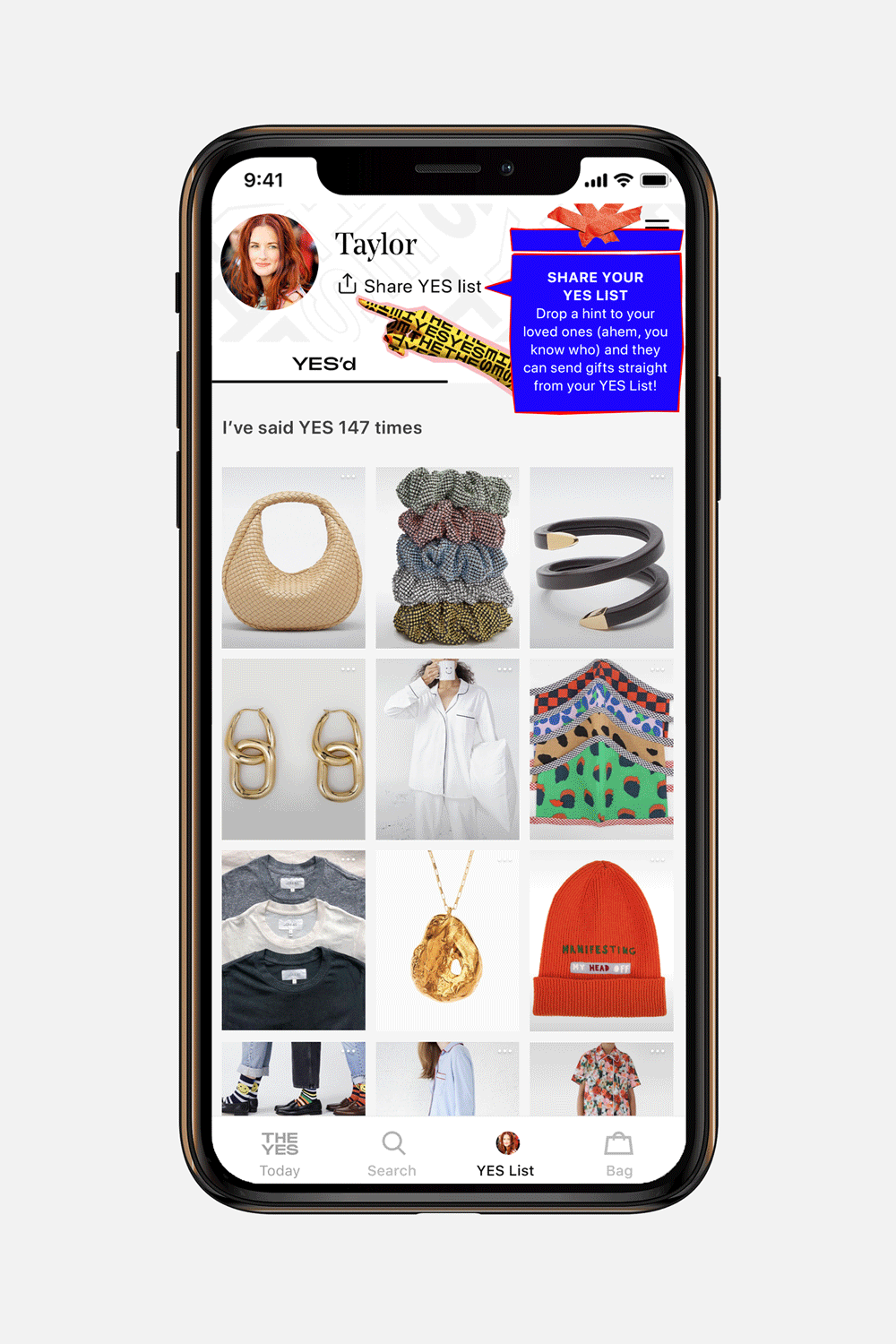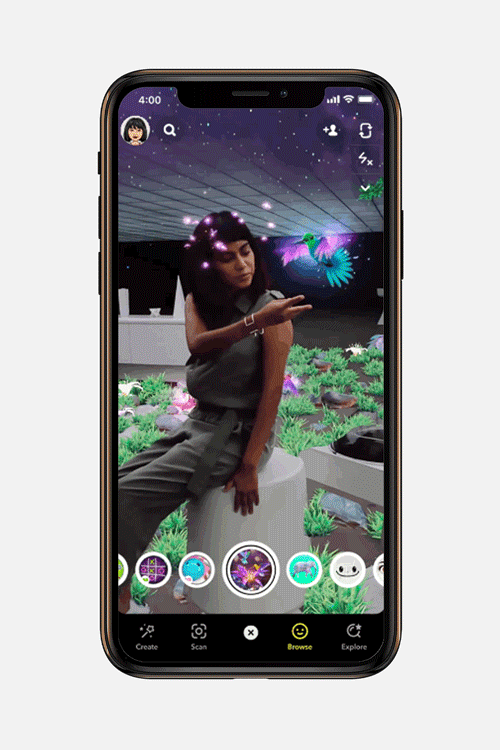Customers can be wary of downloading too many fashion apps, making it difficult for newcomers to crack the format. Perhaps giving them a preview — with no upfront commitment — might be a better way forward.
This softer approach to customer acquisition appeals to fashion shopping app The Yes, launched in May in San Francisco, which is built on a highly personalised model and is the first app to use Apple’s App Clips.
The Yes app shows customers items in their size according to their preferences from some 60,000 styles. The app becomes fine-tuned as customers select “yes” on favourite items. This means that individual experiences can vary greatly among users. It also means that The Yes is not particularly well-suited to giving or receiving gifts. This algorithmically derived conundrum may well be resolved by Apple’s App Clips.
The new tool from Apple is part of the recent iOS 14 update and allows people to use small portions of apps without having to download and install them. Users of The Yes can now share their “Yes List” with others via text message; recipients of the text can then purchase from the list via Apple Pay, without having to download the app. When they stop using it, the App Clip disappears. This keeps The Yes tailored to each user and exempts gift-givers from having to download an app they’re not likely to regularly use.
The Yes co-founder and CEO Julie Bornstein considers the holiday shopping season to be good timing. “This is something we were hoping to be able to do for holiday because our primary use-case is so self-shopping oriented, so you have this really elegant way of being able to also enable gifting,” she says.
Outside of gifting, the tool has additional potential uses for fashion and shopping apps, which tend to have better functionality than mobile websites. A shopper could quickly access ratings and reviews on a product in a showroom, or check out via a retailer’s app while in or near a store. Someone playing a brand’s in-app game could share it to play with a friend. Multi-brand apps, like Shopify or Etsy, could create custom App Clips for individual sellers tied to specific boutique locations.
Besides being accessed via messages, App Clips can be initiated in Safari, Apple Maps or the physical world through a special App Clip Codes sticker. DSW is piloting self-checkout via a DSW App Clip that allows customers to checkout in stores with their own devices. The shoe store is testing in 37 locations in Ohio and Illinois, with a potential national rollout next year. Etsy has started testing App Clips, although the company declined to elaborate on how. Momentum is likely to build in the coming months.
App Clips debuts at a time of increased mobile usage coupled with consumer fatigue with branded apps. Its supporters say it offers a low-friction way for customers to preview new apps and for brands to increase conversions. The lightweight experience is “an easy entry point into an app experience”, says Andrew Lipsman, eMarketer principal analyst. If brands are successful at demonstrating value, they might ultimately attract new long-term app users. “Especially in retail and fashion, apps can be extraordinarily valuable, because you can more easily communicate with customers, your logo is top of mind and people tend to purchase more frequently,” he says.
Consumers have historically had a “complicated relationship with fashion apps”, explains Gartner vice president and team manager Lauren Price. For some years, every brand was encouraged to create an app, but many struggled to make a compelling-enough use-case. Meanwhile, mobile web technology improved and “home screen” apps like Amazon and Instagram expanded their functionality and dominance.
More recently, an app renaissance has occurred, driven largely by a direct-to-consumer push. Brands seeking to own the user experience and the user data see apps as an ideal avenue. Although app bells and whistles have improved — including augmented reality, games, location-based services, live videos and personalised alerts — brands face an uphill battle to recruit loyal app users.
“Because of the burnout phase, consumers might have dismissed the notion, thinking they don’t need a fashion app except for Amazon,” Price says. “Retailers are doing a better job of coming up with real value propositions, but it might be hard to convince that customer who deleted apps a year ago. App Clips give a way to give them a preview and realise it’s worthwhile.”
The time for brands to tap into apps is ripe. US consumers downloaded 12 million shopping apps from Thanksgiving through Cyber Monday, according to App Annie, led by Walmart, Amazon, Shop, Target and Nike (the only monobrand app to make the top five).
The time spent in shopping apps has grown significantly, says Lexi Sydow, senior market insights manager at App Annie, a mobile data and analytics company. Even before the holiday shopping weekend, the fourth quarter of 2020 saw 25 per cent growth year-over-year in average weekly time spent in shopping apps on Android devices in the US. In the past two years, purchase engagement in shopping apps has increased 149 per cent, according to app marketing firm Liftoff. The pandemic has accelerated average mobile device usage to four hours and 20 minutes daily, with a 32 per cent increase in spend on retail and apparel, according to a recent App Annie report.
Meanwhile, there are more apps than ever, making them harder to discover — to say nothing of the inconvenience of downloading and installing an app while in a store. Apple’s app store has an estimated 2 million apps, which facilitated $519 billion in billings and sales globally in 2019 — $268 billion of that going to retail (not including grocery delivery).
Gartner’s Price agrees there are many incentives for brands to still invest in apps, including loyalty programmes that can be used both online and off. Apps are also useful for creating product “wishlists” — she points to Asos and Rent the Runway as additional examples — for helping customers navigate massive catalogues. Bornstein, for example, says The Yes is second only to Farfetch in breadth. Many brand apps have a very specific, tactical purpose, Price adds, such as Louis Vuitton’s smart luggage or Gucci’s use of AR try-on and gaming. A brand might harness App Clips for use limited to a certain time or geography.
Lipsman encourages brands to consider how the “lightweight” experience of an App Clip might introduce people to an app experience. “App Clips are a blank canvas. What we see app makers do with it will be interesting. There is a place for a good retail app to carve its way onto the phone in a way that hasn’t existed before.”
To receive the Vogue Business newsletter, sign up here.
Comments, questions or feedback? Email us at feedback@voguebusiness.com.
The tech behind ‘social-distance selling'
Smartphones are the new salesfloor
Ex-Stitch Fix COO raises $30 million for AI-powered shopping platform

